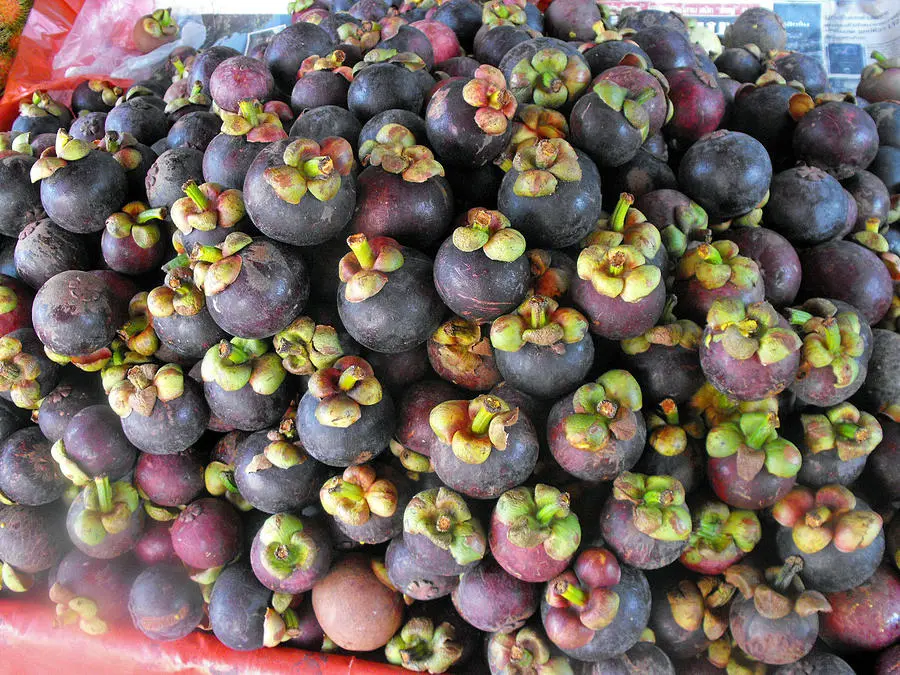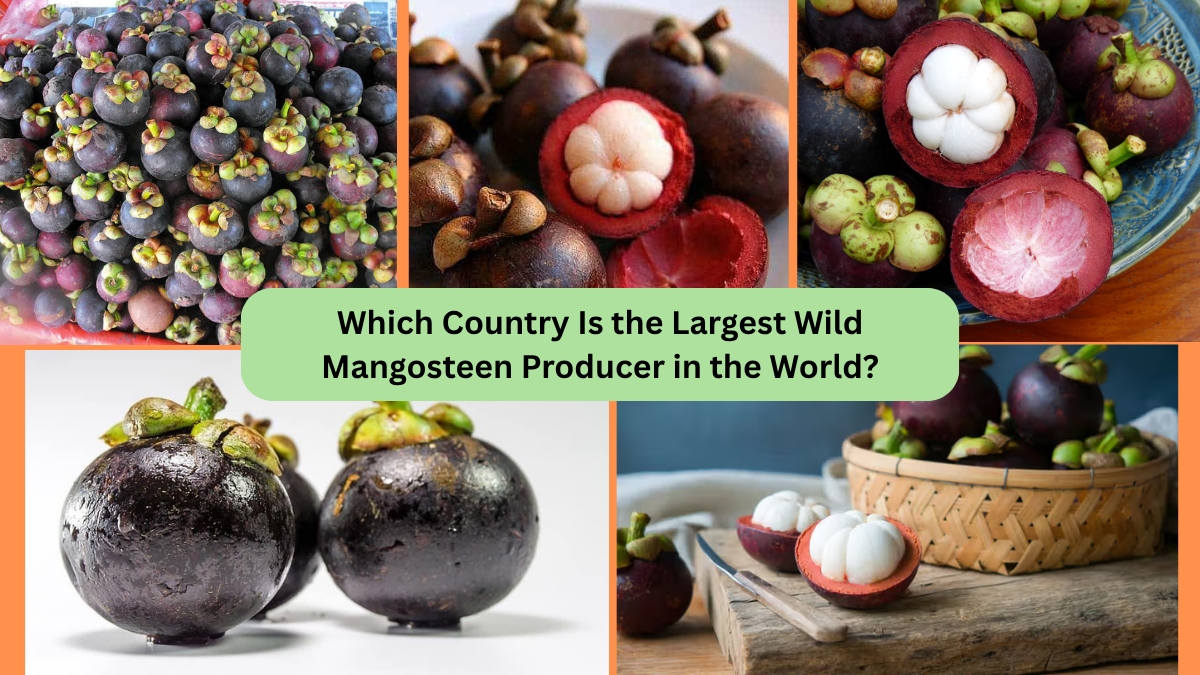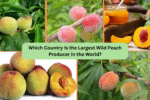Wild mangosteen, scientifically known as Garcinia indica, is a lesser-known yet nutritionally potent tropical fruit native to the Indian subcontinent. Often confused with the famed purple mangosteen (Garcinia mangostana), wild mangosteen is locally cherished for its tangy, juicy flesh and revered in Ayurvedic medicine for its cooling and digestive properties. In this comprehensive article, we delve into the origins, cultural significance, health benefits, and identify the largest producer of wild mangosteen in the world.
What Is Wild Mangosteen?

Wild mangosteen, also called kokum in India, is a small, round, deep purple to black fruit with a sour, astringent taste. Its rind is thick and loaded with anthocyanins and hydroxycitric acid (HCA), both known for their antioxidant and health-boosting effects. The tree, an evergreen species, grows predominantly in tropical rainforests, thriving in the Western Ghats, a biodiversity hotspot in India.
Unlike its more popular cousin, purple mangosteen, wild mangosteen is often dried and used as a natural souring agent in traditional dishes and beverages.
The Cultural and Historical Significance of Wild Mangosteen
Wild mangosteen has been integral to culinary and medicinal traditions in western and southern India for centuries. Its dried rind is widely used in regional curries, lentil dishes, and as a natural preservative. The fruit is also a key ingredient in kokum sherbet, a refreshing summer drink believed to cool the body, aid digestion, and prevent dehydration.
In Ayurveda and Siddha medicine, kokum is prescribed for treating gastric ailments, heat strokes, and skin disorders. Historically, it has also served as a natural dye due to its rich pigment.
The Largest Wild Mangosteen Producer in the World: India

Without a doubt, India is the largest producer of wild mangosteen (Garcinia indica) in the world. The fruit’s endemic presence in the Western Ghats and the country’s traditional reliance on it for culinary and medicinal purposes have ensured its prominence in India’s agricultural and cultural landscapes.
Why India Leads in Wild Mangosteen Production
1. Native Habitat and Abundant Wild Growth:
The Western Ghats, stretching across Maharashtra, Goa, Karnataka, Kerala, and Tamil Nadu, provide the ideal tropical environment for wild mangosteen trees. These forests host the largest wild-growing populations of kokum globally.
2. Traditional Usage and Demand:
Generations of communities in western and southern India have used kokum in everyday cooking and folk medicine. The seasonal demand for kokum products, especially during summer, keeps its cultivation alive.
3. Expanding Cultivation Practices:
Although predominantly wild-harvested, increasing commercial cultivation of kokum in Maharashtra, Karnataka, and Kerala has boosted India’s production levels.
4. Culinary and Pharmaceutical Industries:
The growing popularity of kokum-based products like syrups, squashes, herbal supplements, and cosmetics has strengthened India’s position as the top kokum producer.
Other Countries Producing Wild Mangosteen

While India dominates global production, wild mangosteen or related Garcinia species are found in:
Sri Lanka:
Limited to southern and southwestern wet zones, where it’s used in local herbal medicines and preserves.
Indonesia and Malaysia:
Though these countries primarily focus on Garcinia mangostana, some regions grow indigenous Garcinia species for traditional uses.
Thailand and Myanmar:
Small-scale cultivation and wild harvesting of related species occur, mostly for regional culinary applications.
However, none match India’s scale, diversity, or cultural integration of wild mangosteen.
Health Benefits of Wild Mangosteen
Wild mangosteen is highly valued for its numerous health benefits:
- Rich in Antioxidants: The rind contains potent anthocyanins and garcinol, which combat oxidative stress.
- Digestive Aid: Traditional medicine uses kokum to treat acidity, flatulence, and indigestion.
- Natural Body Coolant: Kokum sherbet is a renowned summer drink to lower body heat.
- Anti-Inflammatory: Used for relieving joint pain, ulcers, and skin inflammations.
- Supports Heart Health: The fruit’s bioactive compounds help reduce cholesterol levels.
- Promotes Skin Health: Applied as an ointment for rashes and allergies.
- Weight Management: Hydroxycitric acid (HCA) in the fruit suppresses appetite and inhibits fat synthesis.
Culinary Uses of Wild Mangosteen in India

Wild mangosteen features prominently in the regional cuisines of western and southern India:
- Kokum Sherbet: A tangy-sweet summer drink made with kokum syrup, sugar, and cumin.
- Souring Agent: Added to curries, dals, and fish preparations in Maharashtra, Goa, and Karnataka.
- Chutneys and Pickles: Blended with spices for flavorful condiments.
- Kokum Butter: Extracted from seeds, used in traditional cosmetics and medicines.
- Herbal Supplements: Encapsulated extracts marketed as digestive and antioxidant boosters.
Economic and Ecological Importance
Wild mangosteen plays a significant ecological and economic role:
- Forest-Based Livelihoods: Provides income for tribal and forest-dwelling communities through wild harvesting.
- Drought-Resistant Crop: Thrives in humid and semi-humid tropical conditions.
- Biodiversity Conservation: Supports Western Ghats’ ecological balance by preserving native species.
- Sustainable Resource: Minimal agricultural inputs required; often grows wild without chemical fertilizers or pesticides.
Challenges in Wild Mangosteen Production

Despite its popularity and health benefits, wild mangosteen faces several challenges:
- Seasonal Availability: The fruit is harvested for only a few weeks between April and June.
- Post-Harvest Losses: Kokum’s short shelf life demands quick processing and storage.
- Unorganized Supply Chains: Wild collection remains informal, affecting consistent supply and pricing.
- Limited Commercial Awareness: Globally underrepresented compared to other tropical superfruits.
Future Prospects for Global Markets
With rising international demand for exotic, antioxidant-rich, and functional foods, kokum holds promising export potential. Indian kokum-based beverages, extracts, supplements, and cosmetics are increasingly finding niche markets in health-conscious and Ayurvedic product segments.
Value-added products such as ready-to-drink kokum sherbet, garcinia supplements, herbal teas, and organic skin creams can enhance rural incomes and promote sustainable wild harvesting.
Conclusion
India’s tropical forests, traditional knowledge systems, and culinary heritage have firmly established it as the largest producer of wild mangosteen (Garcinia indica) in the world. From the dense canopies of the Western Ghats to bustling spice markets in Maharashtra and Kerala, kokum remains a cherished culinary, medicinal, and cultural treasure.
While countries like Sri Lanka, Indonesia, and Thailand cultivate related species, India’s dominance in terms of production volume, cultural integration, and market diversity remains unparalleled. As global awareness of kokum’s health benefits rises, this humble forest fruit is poised to achieve greater international recognition, carrying forward a legacy rooted in India’s rich ecological and cultural traditions.



